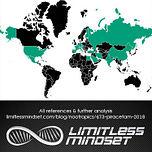The enigmatic smart drug, Piracetam, remains the subject of ongoing scientific research, with dozens of scientific papers and human clinical studies completed every year. This is especially impressive because it's not an expensive patented drug.
There's not the perverse financial incentive of a pharmaceutical company sponsoring science and trying to get researchers to skew their data. The perpetual research on Piracetam speaks to its potential as a Nootropic.
The Science
It would be an understatement to say that it's been thoroughly studied; in total over a thousand pieces of published research on Piracetam can be found on Pubmed, with over 200 human clinical trials.
This article will summarize the science that's been done on Piracetam in the past 12 months along with some salient insights and knowledge coming out of the Biohacker community online.
Why 2017?
More often than not science does not always age well. In anything related to neuroscience, which is a pretty innovative domain, you should have some preference for recentness (which is a word!).
Interestingly, in 2017 62 scientists and physicians along with some United States senators called upon the National Library of Medicine & National Institutes of Health to change their rules and make public the funding sources of studies, before 2017 researchers could more or less obfuscate the funding sources of their science. This makes science more honest.
Surprisingly, American politicians every once in a while take a break from their sex scandals, virtue signaling, golfing, cashing lobbyist's checks, and suit shopping to do something good for science! America f**k yeah!
To summarize some of the more interesting published scientific findings about Piracetam in the past year...
Listen to this episode with a 7-day free trial
Subscribe to Limitless Mindset to listen to this post and get 7 days of free access to the full post archives.










